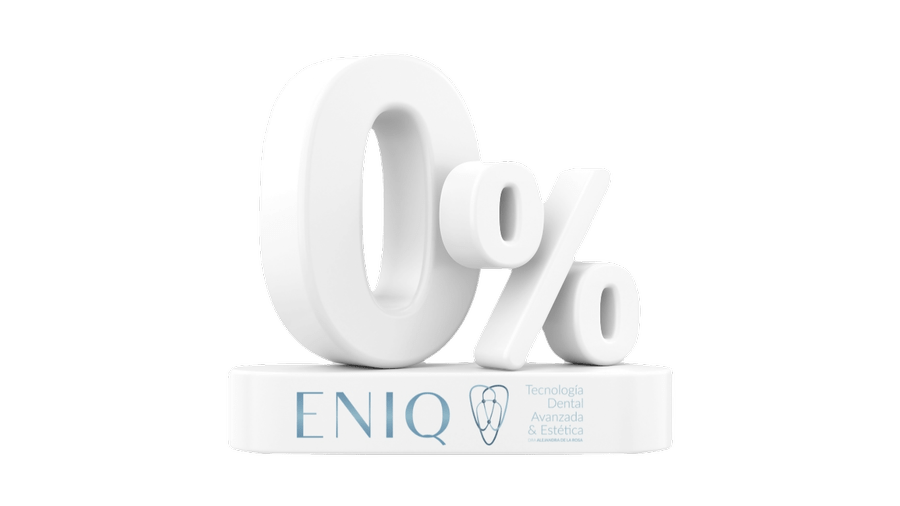

Tongue Habit
Customized solutions to improve oral health and articulation.
What does the lingual habit consist of?
The tongue habit, also known as incorrect lingual habit or atypical swallowing, refers to an inappropriate pattern of movement and position of the tongue during swallowing and speech. In normal swallowing, the tongue is placed against the palate and gently pushes food towards the throat. However, in the case of the tongue habit, the tongue may push against the teeth or move forward between the teeth during swallowing.
The tongue habit can be caused by various factors, such as:
- Inappropriate oral habits: Sucking one's thumb, lip sucking, or prolonged pacifier use can affect the development and position of the tongue.
- Structural problems: Some people may have structural abnormalities in the mouth or oral muscles, such as a misaligned jaw or an overly large tongue, which can contribute to the tongue habit.
- Oral breathing: Chronic mouth breathing, due to nasal obstructions, allergies, or other respiratory problems, can cause the tongue to adopt a low and forward position.
- Dental malocclusions: Constant pressure of the tongue against the teeth can alter their position and contribute to dental malocclusions, such as crowding or open bite.
The tongue habit can have negative consequences for oral health and facial development. Some of these consequences may include:
- Dental misalignment: Constant pressure of the tongue against the teeth can cause dental crowding, gaps between the teeth, or dental misalignments.
- Speech problems: The tongue habit can affect the pronunciation of certain speech sounds, such as the letters "s" or "r".
- Difficulties in chewing and swallowing: The inappropriate pattern of tongue movement can interfere with efficient chewing and swallowing of food.
- Aesthetic problems: The tongue habit can influence the shape and position of the lips and facial muscles, which can affect the aesthetics of the smile and the facial profile.
The treatment of the tongue habit generally involves collaboration from dental professionals, such as orthodontists, speech therapists, or speech-language pathologists. The goal is to correct the pattern of tongue movement and promote an appropriate position during swallowing and speech. Therapy exercises, the use of orthodontic devices, and the modification of inappropriate oral habits can be part of the treatment.
What is the process for eliminating the tongue habit?
The procedure to correct the tongue habit can vary depending on the cause and severity of the problem. Treatment generally involves a combination of therapeutic approaches and changes in oral habits. Below are some common steps that may be followed:
- Evaluation and diagnosis: A specialist in orthodontics, speech therapy, or speech-language pathology will evaluate the tongue habit and determine the underlying cause. This may include a review of medical and dental history, as well as an assessment of the position and movement of the tongue during swallowing and speech.
- Therapy and exercises: Specific speech therapy exercises may be prescribed to correct the tongue habit. These exercises can include strengthening of the oral muscles, training for the proper position of the tongue during swallowing and speech, and techniques to reeducate incorrect movement patterns.
- Orthodontic devices: In some cases, orthodontic devices may be recommended to correct the tongue habit. These devices can include plates or retainers that help maintain the tongue in a proper position and prevent it from pressing against the teeth.
- Modification of oral habits: Work on modifying inappropriate oral habits that contribute to the problem. This may involve stopping thumb sucking, lip sucking, or pacifier use, and encouraging nasal breathing instead of oral breathing.
- Follow-up and monitoring: Regular follow-up with the specialist is important to evaluate progress and make necessary adjustments to the treatment. Periodic visits can be scheduled for assessments and adjustments in orthodontic devices, as well as to continue therapy and exercises.
It is essential to keep in mind that the treatment of the tongue habit requires time, patience, and commitment from both the patient and the specialist. The success of the treatment depends on the active and continuous collaboration of the patient in implementing the recommendations and practicing the correct exercises and habits. A multidisciplinary approach involving professionals from different fields can be beneficial to comprehensively address the tongue habit and achieve successful outcomes.
How much does the device to correct the tongue habit cost in Spain?
The price of a lingual grid can range from 250€ to 500€, including monthly check-ups with the orthodontist.

- Financing: Up to 24 months interest-free. Up to 60 months with preferential conditions.
- Payment splitting: Pay monthly in comfortable installments for the treatment.
- Discount for early payment: Paying for the entire treatment at the start.
- Multiple payment options: Direct debit, credit card, cash, transfer, Apple Pay, Google Pay, and Bizum.
Lingual Grid
Advanced Correction
*subject to specialist assessment
-
All inclusive
-
Interest-free financing
Frequently Asked Questions
Do you have more questions about tongue habits and their solutions like the lingual grid?
The duration of using a lingual grid can vary depending on the case, but it is generally recommended to use it for several years or even for life to maintain the results of orthodontic treatment.
At first, it might feel a bit uncomfortable and affect pronunciation, but most people quickly adapt. Over time, it becomes less noticeable.
